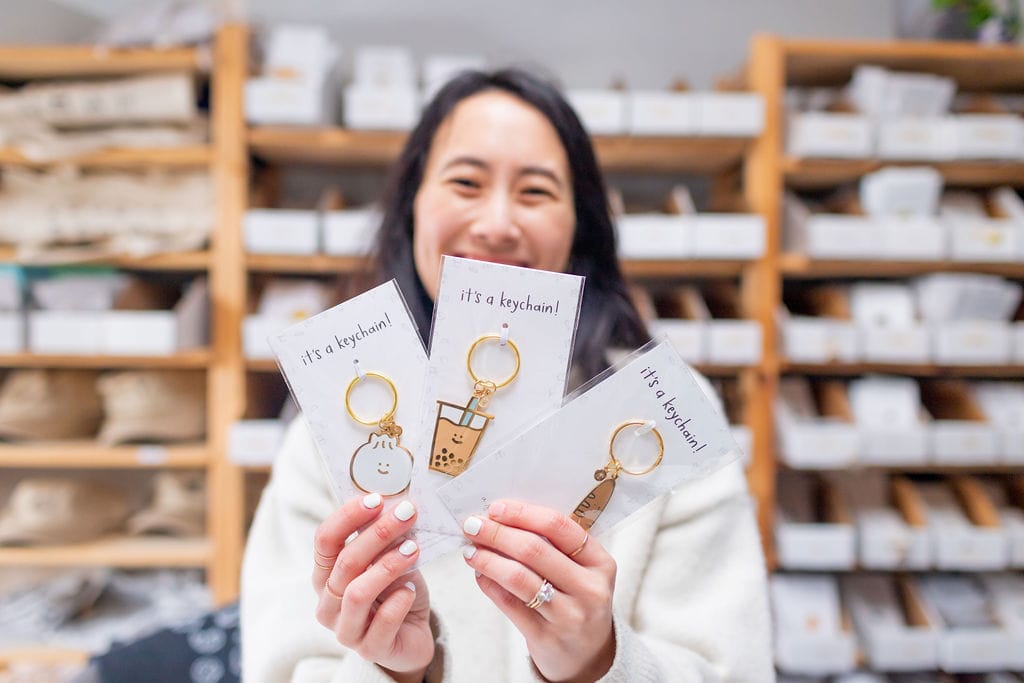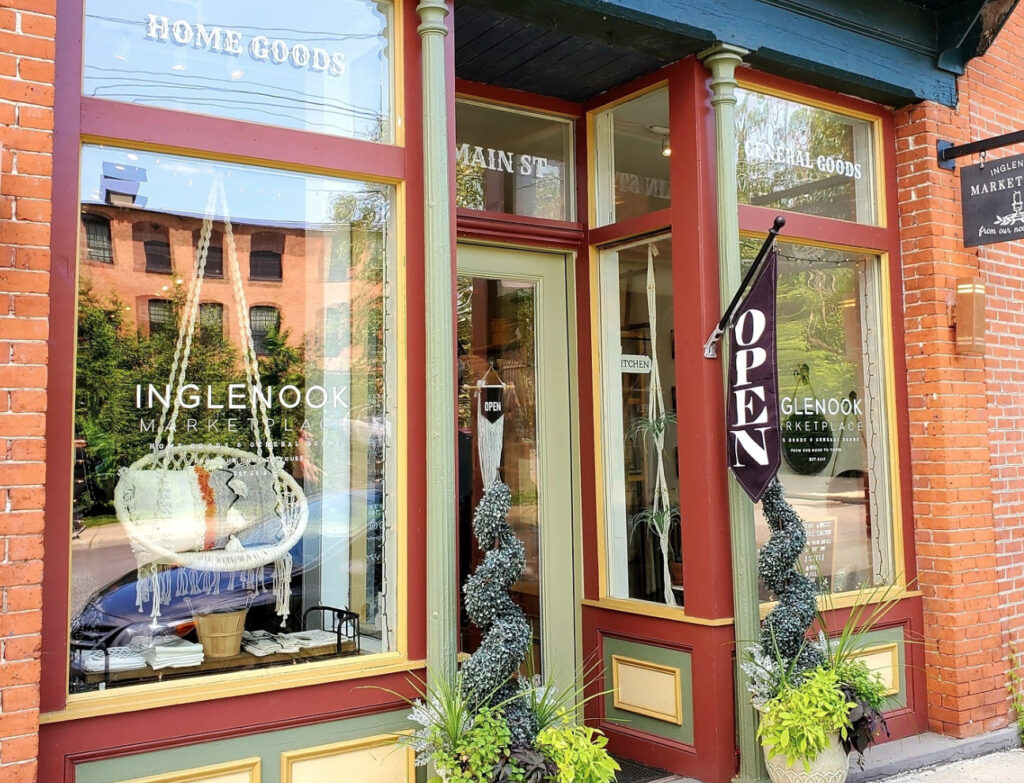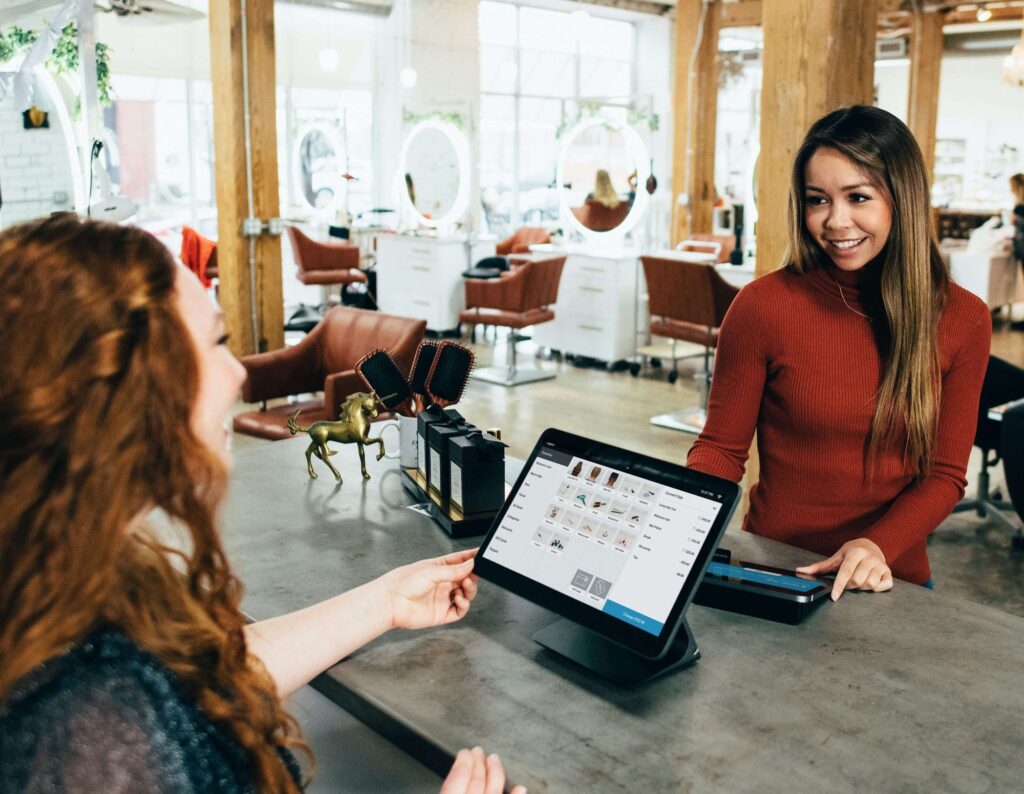How I Grew a $200 Side-Hustle Etsy Shop Into a Multi-6-Figure Business
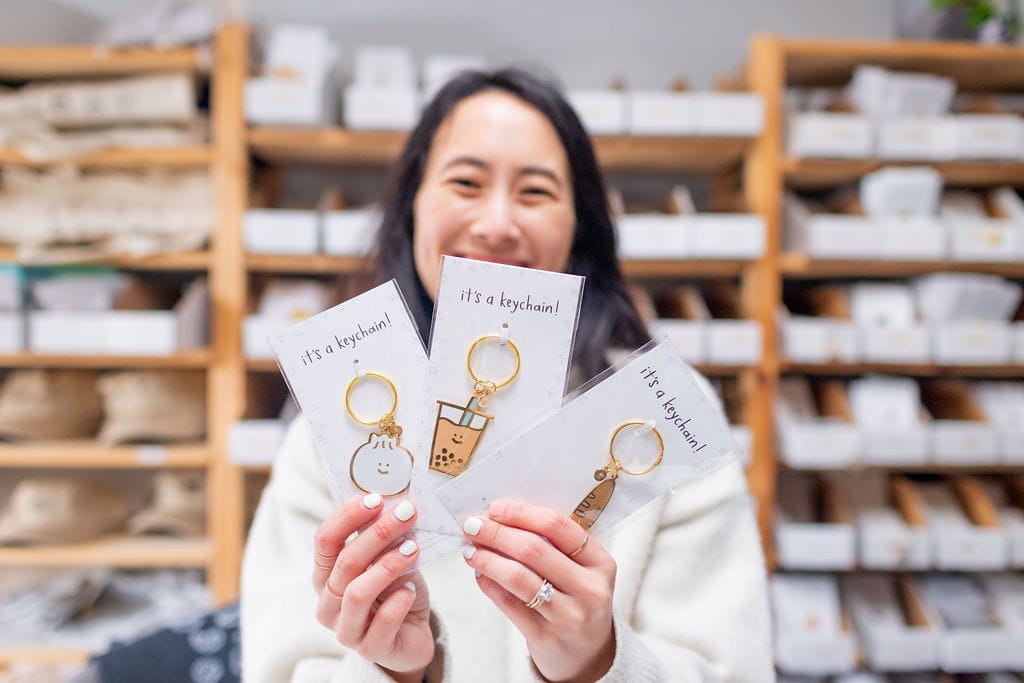
By Kirstie Wang
My business started off as a small, experimental project nearly a decade ago. I had a lot of free time between graduating from college a semester early and starting my full-time job, where I'd eventually pursue a career in design and marketing in the tech world. I was known for constantly doodling on Adobe Illustrator in class, and one of my friends suggested I try and sell some of my designs on Etsy. So I did.
The early version of my store, A Jar of Pickles, was very low budget. I only sold greeting cards because they were the lowest barrier to entry, and I didn’t even hold inventory, instead going to the office supply store every Friday night to print the handful of orders I had gotten that week.
About a year in, I was seeing consistent enough sales that I decided to invest about $200 in buying some cards and envelopes in bulk (to improve my margins from printing on demand), some equipment to help me fold cards faster, and some packaging and shipping supplies.
From there, my business growth snowballed, slowly and steadily at first and then very suddenly. In 2020, we hit six figures in annual revenue. In 2021, I hired my first real employee and have since added two more. And, in 2022, I finally decided to put aside my corporate career and go full-time on the business.
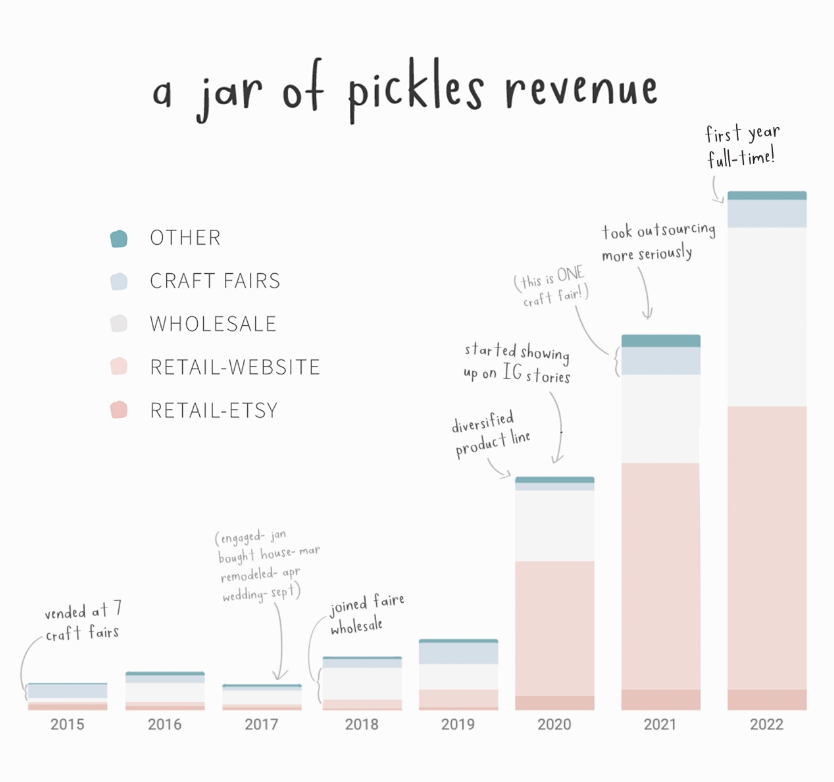
Some of this growth was definitely a happy accident, but some of it was thanks to a few pivotal decisions I made along the way. Read on to learn the milestones and mindsets that have helped my business succeed, and how you can apply them to your own growing venture.
I found my own approach to wholesale (and every other business goal)
Almost everyone who makes physical products wants to see their products in a storefront—it’s validating and a great way to reach new audiences. So, once I was getting consistent sales on Etsy and started to think about my next business goals, wholesale was pretty quickly on the table.
I knew nothing about wholesale, so I turned to Google University, looked for resources online from other business owners, and took a course to learn more about trade shows. A lot of other businesses in my industry build their income around doing three or four trade shows a year and getting into big stores like Nordstrom or Target. And while being in those stores sounded cool to me, going to trade shows did not. I was still working full-time and would have to take PTO days to go to trade shows—days I would rather save for, you know, actual vacation.
So, I considered the options and found a more realistic approach, given my situation and values. I decided to aim for smaller boutiques, cold pitching retailers via email, and spend the rest of my energy focusing on direct-to-consumer sales. I spent a good …read more
Source:: Buffer Blog


